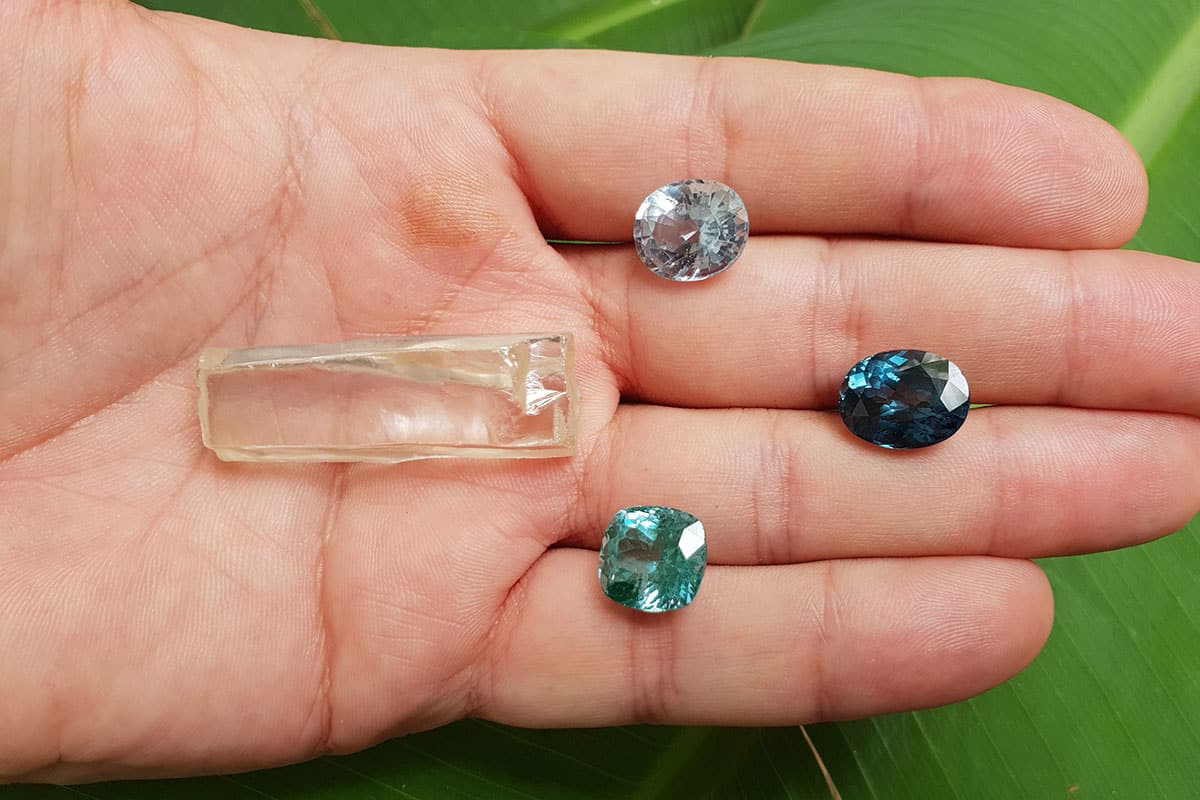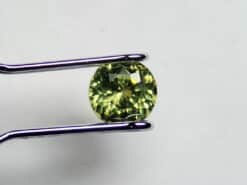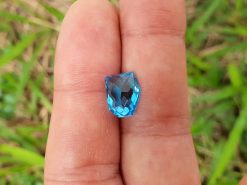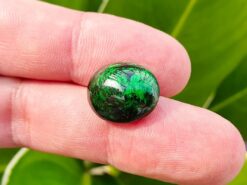Cubic zirconia

Cubic zirconia, or its abbreviation CZ, is the cubic crystalline form of man-made zirconium dioxide (ZrO2).
Buy natural gemstones in our gem shop
CZ diamond imitation
The material is hard, optically flawless and usually colorless. We find it in a variety of different colors. It s often confused with zircon. As a natural zirconium silicate (ZrSiO4). In the trade market, you will earned differents wrong names as cubic zirconium, also zirconium, zirconia, or even zircon.
It is low cost, durable, and a close visual likeness to diamond. Cubic zirconia has remained the most gemologically and economically important competitor for diamonds. Since commercial production began in 1976. Its main competitor as diamond imitation is synthetic moissanite. The most sparkling stone ever seen until now.
CZ stones properties
Cubic zirconia is crystallographically isometric, an important attribute of a would-be diamond simulant. During synthesis zirconium oxide would naturally form monoclinic crystals, its stable form under normal atmospheric conditions.
A stabilizer is required for cubic crystals to form, and remain stable at ordinary temperatures. This may be typically either yttrium or calcium oxide, the amount of stabilizer used depending on the many recipes of individual manufacturers. Therefore, the physical and optical properties of synthesized CZ vary, all values being ranges.
It is a dense substance. With a specific gravity between 5.6 and 6.0, at least 1.6 times that of diamond. Cubic zirconia is relatively hard, 8–8.5 on the Mohs scale. It s slightly harder than most natural gemstones. Its refractive index is high at 2.15–2.18, compared to 2.42 for diamonds.
Its dispersion is very high at 0.058–0.066. Exceeding that of diamond (0.044). Cubic zirconia has no cleavage and exhibits a conchoidal fracture. Because of its high hardness, it is generally considered brittle.
Zirconia stone
Due to its optical properties YCZ. We use yttrium cubic zirconia for windows, also lenses, prisms, filters and laser elements. Particularly in the chemical industry. We use it as window material for the monitoring of corrosive liquids.
Due to its chemical stability and mechanical toughness. We also use YCZ as a substrate for semiconductor and superconductor films in similar industries.
Mechanical properties of partially stabilized zirconia, high hardness. And also shock resistance, low friction coefficient, high chemical and thermal resistance. As well as high wear and tear resistance. We use it as a very particular building material.
Particularly in the bio-engineering industry. It is used to make reliable super sharp medical scalpels for doctors. Due to its compatibility with bio tissues. It contains an edge much smoother than one made of steel.
FAQ
Is cubic zirconia worth anything?
From a value standpoint, it is worth next to nothing. If you were to try and resell a cubic zirconia engagement ring, you could perhaps retain some value for the setting. The CZ, just like other diamond simulants, carries no market value.
Is cubic zirconia diamond fake?
This crystalline material is synthetic, which means it is created in a laboratory. Since cubic zirconia mimics a diamond but is not the same material, it is referred to as fake, imitation, and stimulant.
Is cubic zirconia shinier than diamond?
It does not compare to the hardness of a diamond. Its rating on the Mohs Scale of Hardness is 8.5. However, because it’s artificially created in a lab, CZ is inherently flawless. In terms of sparkle and shine, no other diamond substitute compares.
Can you wear cubic zirconia everyday?
Always remove any jewelry before you swim in a pool since the chlorine can tarnish metals and cloud your stone. Clean your CZ jewelry at least once a month if you wear it often. If you only wear it on occasion, simply clean it whenever you notice that the stone is starting to look dull or cloudy.
Will cubic zirconia pass a diamond tester?
No. CZ does not register any result on a diamond tester. In that regard it is the same as glass.
















